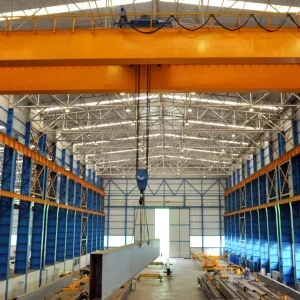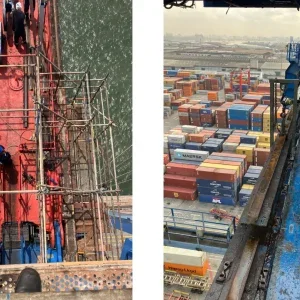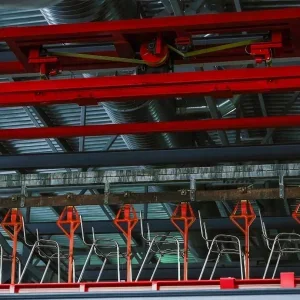The Lifting Equipment Engineers Association urges anyone buying lifting equipment to recognise that they are likely to ‘get what they pay for’. In other words, if item A is significantly cheaper than item B, there is likely to be a reason for it. It is wise to consider whether item B might also be of a lower quality, and whether it is fit for purpose. At face value, this seems simple common sense.
There is a back story behind the LEEA’s warning cry. Increasing quantities of lifting gear made in China are now appearing on the market in the UK and elsewhere in Europe. Of course there have always been lower cost imports in the industry but there is a view now that the whole lifting gear trade in the UK – and perhaps elsewhere – is threatened with destabilisation.
While there may appear to be a strong protectionist streak to the LEEA’s actions, it insists that its sole concern is safety and industry standards. It is concerned that equipment being manufactured in low cost countries – and China is today cited as the major country of origin of exceptionally low price lifting equipment – does not meet the standards required and that accidents will follow.
As part of its campaign to raise awareness that ‘you get what you pay for’, the LEEA has asked its members to bring to its attention any problems that have experienced using Chinese equipment. To date, no significant problems have been reported. From this we can deduce one of two things: either that it is too soon for any latent defects to have manifested themselves; or that although the Chinese clamp, shackle, hook or whatever looks to be of a lower quality than the long trusted Crosby or Gunnebo, and weighs noticeably less, it still does the job and meets the prescribed standards. It is rated at one tonne and it lifts one tonne. What’s the problem? LEEA chairman Paul Fulcher, who is also operations director of rental company Lifting Gear Hire (LGH), believes that it is all a question of buyers knowing exactly what they want, and ensuring that they get something that meets their needs. If you want a sling to lift one tonne once, or even a dozen times, the low price option is very likely to be perfectly good enough for you. But for LGH, which rents out equipment from 45 locations around Europe and North America, this is not good enough. It wants equipment that lasts a lot longer than this. It knows that its customers working on construction sites, on oil rigs offshore, in underground mines and tunnels, are going to give lifting equipment the hardest possible treatment, time and time again. The professional reputation of a company like LGH depends on the quality of the equipment it supplies, and its financial health depends on it making the right investment decisions.
While it is important here to emphasise that low price is not necessarily the same as low cost (there is whole life cost to consider after all), there is no doubt that more and more end users are happy to opt for the low price option. This has massive implications for both the lifting industry and the lifting gear trade.
Fulcher believes that the arrival of the Chinese lifting equipment on the UK market is impacting on the distribution network.
‘It’s pulling distribution apart,’ he says, ‘because the Chinese sell to anyone. It is already changing the industry, but will change it permanently,’ Fulcher says. ‘The supply chain is breaking up.’
John Jones, managing director of Pfaff Silberblau, agrees: “Looking ahead five years, I don’t know if there will be a lifting gear industry in the UK like there is today. The trade is under threat.” Fulcher cites an advertisement published in this very magazine as part of the problem. ‘Have a look at chinalifting.com’ he says. Anyone can buy container loads of lifting gear direct from the manufacturer, presumably at very low prices, and set up a market stall. But what protection does the end user get, he asks.
Fulcher believes that there are significant benefits to the traditional supply chain in the UK where there are perhaps as many as 600 companies that act as intermediaries between manufacturers (or manufacturers’ agents) and the end user. These companies add value because of the expertise that they have. They pass on advice to end-users and help make the industry a safer place.
Conceptually, lifting equipment may appear to be just like hammers and spanners that can be bought over the counter at a hardware store, but it is not. Everyone recognises that a 40m high tower crane, or a 300t capacity crawler crane is a potentially lethal piece of machinery in the wrong hands. But these huge and often sophisticated machines are only as safe as the humble sling or clamp that is being used below the hook to hold the load. This equipment, which anyone can buy off the internet, is enormously safety critical. It is a significant benefit, therefore, if those selling it are also able to share sound guidance based on expertise, education and experience.
One could make a reasonably convincing case that many of the lower price products are just value engineered. Most products of the long established western suppliers will fail eventually when asked to do something they are not designed to. They may even lift five, six or seven times their rated capacity before they break, but eventually they will break. What is so wrong with something that cannot withstand that same level of punishment but lifts only what it says it lifts? The same kind of development has already happened in the mobile crane world. Thirty years ago a mechanical crawler crane from a manufacturer like Manitowoc or NCK could be pushed well beyond the limits specified on the lifting charts (though, of course, it has never been a good idea to do this). Modern hydraulic machines are engineered much more finely. In most ways, they are far better machines than their clumsy predecessors. But their lifespan is shorter and they are not as robust. They are likely to encounter problems at around 120% of rated capacity. Perhaps it is not so strange, therefore, that the same phenomenon should finally arrive with below the hook equipment.
Again, there is a negative impact. As the lower price blocks and clamps become the norm, as it appears they will, they become disposable. The buyer can either have two clamps from a Chinese manufacturer or one from someone like Crosby, for example. Long term vision and whole life costing are increasingly scarce for what is a relatively small purchase. Commercial pressures dictate that costs are cut today, not next year or the year after.
Fulcher believes that the industry’s move towards disposable equipment has implications for the skill base of the industry. Will equipment inspection become a thing of the past because the cost of inspection is higher than the cost of renewal? How are manufacturers from Western Europe and North America to compete with manufacturers in lower cost countries? In part, they can market their equipment as higher priced, higher quality and lower lifetime cost. For a while they might succeed. But history, in the shape of the Japanese car industry some years ago, for example, has shown that this is not enough. They must cut their costs too. And increasingly this is what they are doing and thus, perhaps, eroding product differentiation. They are themselves turning to countries like China to source their product lines. Leading suppliers like Pfaff, Yale and Tractel all buy product from Chinese manufacturers and put their own badges on it. This very fact immediately suggests that it must be wrong to assume that Chinese equipment is all of inferior quality. Plainly it is not.
UK-based Baldwins Global Distribution, a sister company of Loadtite, offers a range of Chinese lifting gear, openly branded as Chinese. Marketing manager Lee Chandler says everything is load tested before it is offered for sale. “We get samples sent to us by Chinese factories,” he says.
“Some of it is trash, some of it is very good. It just depends on the factory. They are beginning to get their act together and comply with regulations” he says.
There are some poorly managed factories in China, for sure, where quality control is lacking. But there are plenty of others that produce equipment of such a high standard that companies like Pfaff, Yale and Tractel are perfectly happy to put their name to. Very similar product from some of these Chinese suppliers also appears in the west with original Chinese branding. It is claimed that Chinese branded product sometimes comes off the same production line at the same time as the products sold under more familiar Western branding. In effect, therefore, customers are paying more just for the benefit of having a strong brand name on their equipment, much as many are prepared to pay $100 for a pair of sports shoes that cost 20 cents to produce in a Third World sweatshop.
That analogy is not entirely fair, however. The fashion conscious dresser chooses a brand for a complex mix of reasons that include self-esteem and a desire for peer approval. In the lifting equipment industry certain brands are preferred because they offer reassurance that they won’t fail and because they come with valuable product support, guidance and advice that the independent merchants of Chinese branded equipment often cannot offer – or at least not to the same level.
And here, perhaps, lies the key to future of the industry.
Companies like LGH will have to realise that it is not enough just to stack their shelves with expensive high quality equipment and hope that customers appreciate the difference. Somehow they will need to emphasise that supplying product is only part of the business. The added value comes from the service that it can offer. What LGH has that an independent merchant probably does not is a workforce of professionally qualified lifting engineers with certificates on the wall to prove it. It must persuade its customers that this overhead is for their benefit. The price of the product will probably have to come down to compete with the merchants, but the shortfall could be made up by selling services which until now have been given away for free as part of the sale. The cost to LGH of that service element has been wrapped up in the sale price. If it can somehow introduce greater transparency to the structure of transactions – part commodity, part service – then it can be seen to be offering more than the independent merchants. It is a hard trick to pull off but LGH seems to have recognised the issues. It now offers certain products in three categories: top of the range, mid range, and budget. Customers will naturally gravitate towards the budget option, but they can then be engaged in a discussion about what the equipment will be used for, steered towards the appropriate purchase and perhaps sold additional relevant services on top.
Whatever usccess the established players have, it is hard to see manufacturers from China and other low cost countries disappearing. They may perhaps in due course establish conventional distribution networks, but for the foreseeable future the independent merchants will flourish as more and more buyers decide that if there are any quality issues relating to these products, the low price makes up for it.
China’s accession to the World Trade Organisation will make it easier for foreign companies to establish their own manufacturing plants there. Over the next 10 or 20 years it will not just be manual equipment but also electric hoists that are likely to be sourced in China in greater and greater volumes. For now, Chinese-made electric hoists are still widely considered to fall a long way short of the quality required for most of the world. For now, it is just mechanical products that are being exported from China in volume. But that will change, and whatever stigma there is in the west attached to a ‘Made in China’ badge will disappear, just as it has for other countries in Asia.






